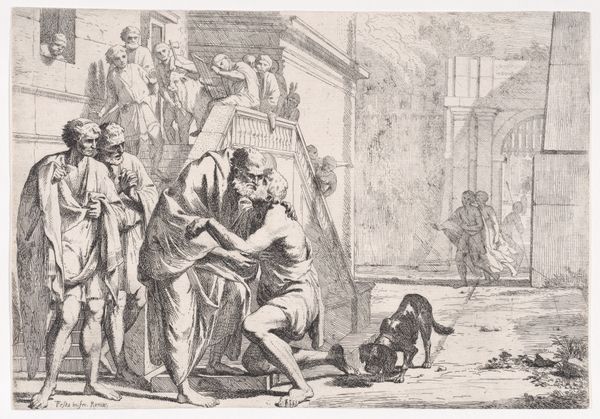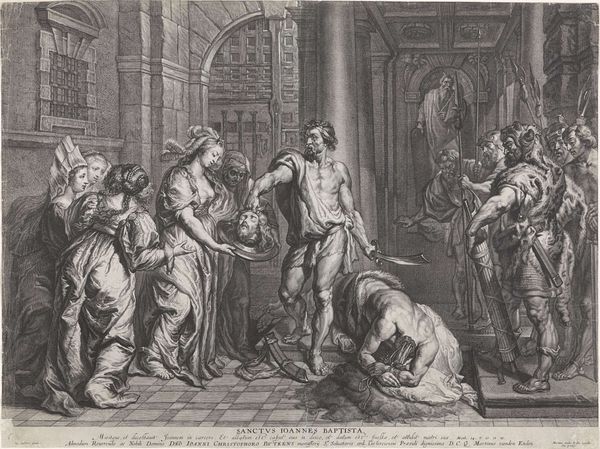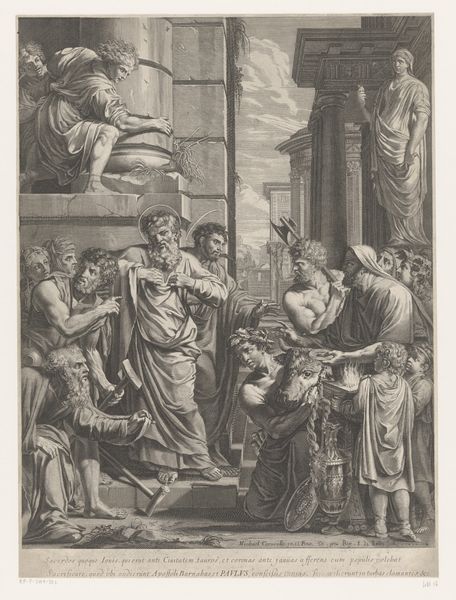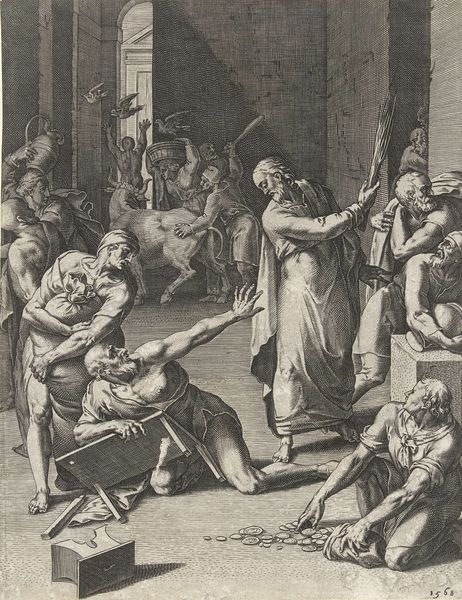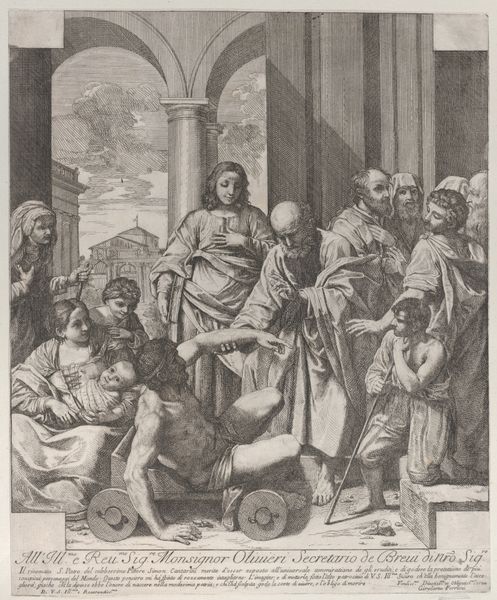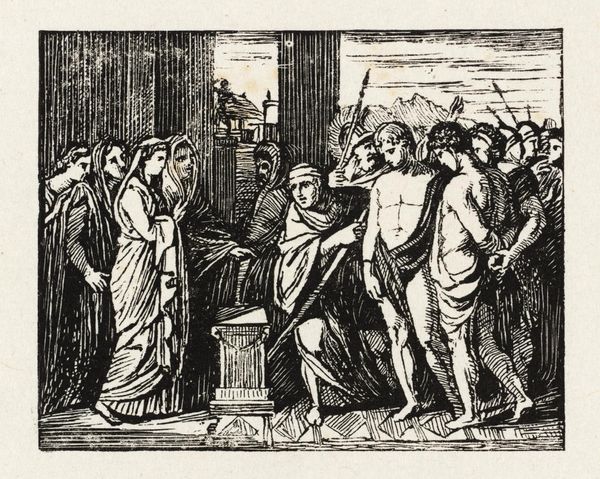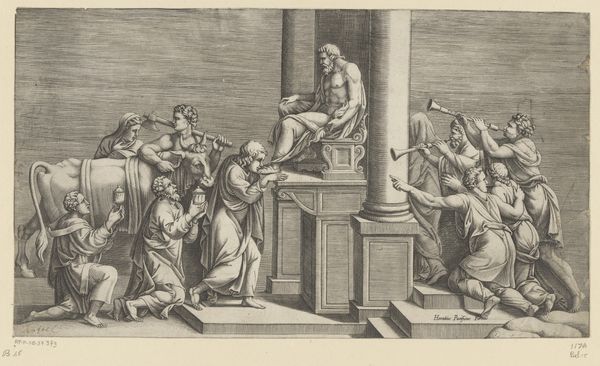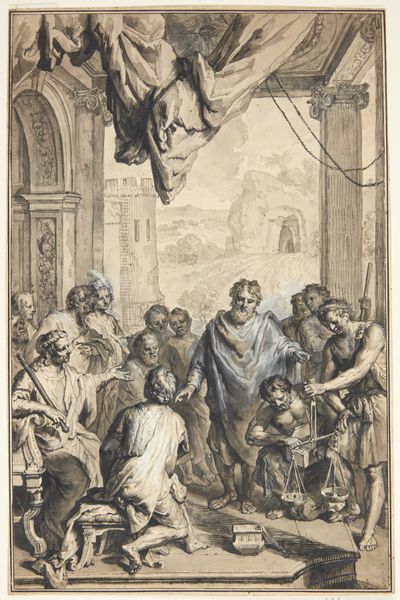
print, engraving
#
narrative-art
#
baroque
# print
#
figuration
#
history-painting
#
engraving
Dimensions: sheet: 7 15/16 x 11 5/8 in. (20.1 x 29.5 cm)
Copyright: Public Domain
Editor: Here we have an engraving, likely made sometime between 1650 and 1700, called "The Return of the Prodigal Son." What I notice first is how detailed the rendering is despite being a print. What's interesting is how the figures become smaller in the background; I wonder if that has any specific symbolic meaning here? Curator: More interesting is that this work engages with production beyond a single artist's hand. As a print, its very existence points to dissemination and consumption. Let's consider the labor involved – the engraver who transferred an existing image and, further, the socio-economic context. Editor: That's a different perspective than I usually take. How does the “means of production,” as you put it, speak to the meaning of the work? Curator: Well, think of it this way: prints democratized art. What was once accessible only to the wealthy could now reach a broader audience. An engraving such as this becomes a commodity circulating in a market, rather than solely an act of artistic creation. Editor: So, by focusing on its creation as a product, we see that the print changes how art is available. Are you saying its meaning changes when art moves from an elite thing to something more accessible? Curator: Precisely! The narrative itself is secondary to the shift it represents in art production and consumption. The religious narrative becomes a vehicle. Even the choice to work within the well-worn, familiar baroque style aligns this engraving with other such pieces available in the period, which also played a crucial role in its financial appeal at the time. How do you understand that connection between the historical context and Baroque in its impact? Editor: I hadn’t thought about it like that! Viewing it this way really expands the work’s importance. Curator: Agreed. We see how closely art’s meaning intertwines with the conditions of its production and consumption in that period. Editor: Definitely! I will remember that from now on. Thank you.
Comments
No comments
Be the first to comment and join the conversation on the ultimate creative platform.
